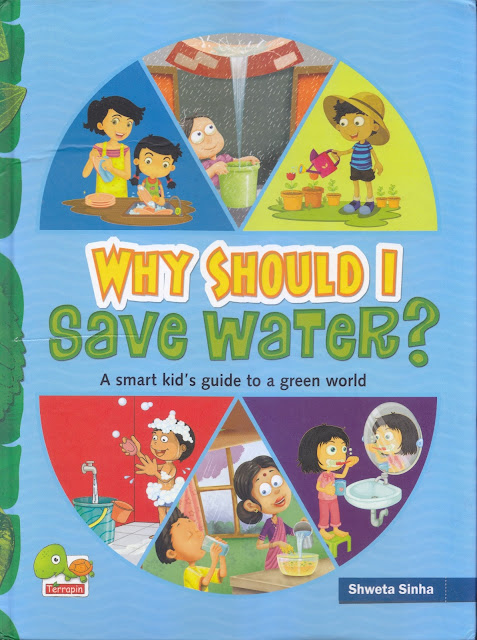Water and Us
Title: Why should I save water? (A Smart kid’s guide to a
green world)
Author: Shweta Sinha
Publisher: The Energy and Resources Institute (TERI)
Year: 2016
Price: 250/-
ISBN: 978 - 81-7993 -369 – 5
Shekar Kapur, the film director, during his TED Talk,
narrated an incident around water. He had gone to meet a friend at an upscale
Bombay locality. The friend kept on enjoying his shower for more than 20
minutes and Kapur left without meeting him. On his way back, not far from his
friends place, he crossed a slum where people stood in queues, for multiple
hours, to fetch water! This incident I recall even a few years after listening
to the talk. A similar connect with this book I am unsure of; for one the book
steers clear of the social and economic issues touching water.
The book does touch upon issues critical in our urban
areas today; issues which question our consumption patterns and those we can
take up action on in our day to day lives. These include wastage of water
discarded by RO filters, ecological impact of bottled water and water required
to produce and maintain our clothes. Issues which warrant attention and
deliberation. It highlights these issues but falls short of pushing the
envelope. It presents information, a lot of which may already be a part of the
school textbooks, and in a manner that chances
of its getting the readers enthused enough to contemplate, question and take up
actions appear slim.
While awareness of situation in different parts of the
globe is good it may have helped to have examples from within our country; with
names, images and issues the readers could identify with. Rather than talk
about European rivers the author could have shared of rivers providing water to
our major cities, how it reaches our taps and how / if the flow can be more
efficient. Singapore is capturing rainwater and so are some of our states. Given
our diversity we are also trying out a wide range of activities. The author
misses an opportunity to help raise questions on how successful (or otherwise)
these measures have been and how the readers can try them out if they already haven’t.
There are parts that leave one amused. ‘Large volumes of water is absorbed the roar
a rocket makes when launched’ is one of the Uses of Water. There is however
little space for cleaning vehicles and homes which consume significant water
each day in our cities and of course the sheer wastage! One wishes the author
had been more specific as one comes across lines like ‘they are also known as marshes, swamps, bogs etc’ and ‘it takes a ton of heat to turn ice into water,
and water into stream’. Select contents do arouse curiosity, some of the
activities, however, like ‘labelling the
continents’ appear forced.
One question which propped up, as I read, was do we have
positive information on the topic for the younger ones? To show that there is
hope and despite all that we have done to nature it has that uncanny ability to
bounce back provided we mend our ways and allow it to. There is mention of
revival of traditional water harvesting practices in Rajasthan but it is lonely
and also a tad too clichéd for a book of this nature.
The hard cover book is colourful and fun to flip through.
Each of the 48 pages boasts of images and/or illustrations. These images and
illustrations do add value to the text but are not free from stereo-typing. Images
depicting vessel cleaning have females while those for drinking water have
males. Similarly for the women filling water pots in Jaisalmer. Points like
time of watering plants have been repeated and editing could have looked these
up.
TERI has brought out books in similar format including on
Conservation and Climate Change and one wonders if they have undertaken
critical evaluation of the previous publications prior to launching this one.
This has been an issue with environment education– of bringing out books for
books sake without a plan or a strategy on how they can be put to use!


Comments
Post a Comment